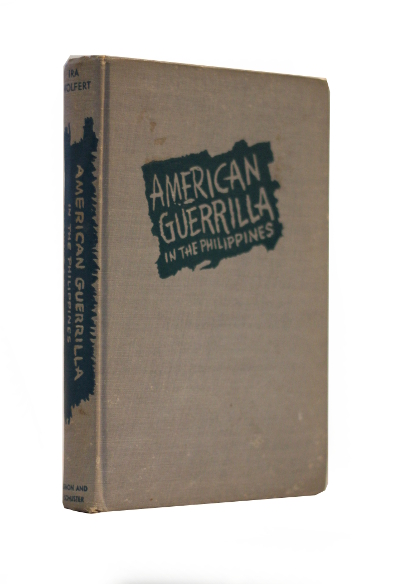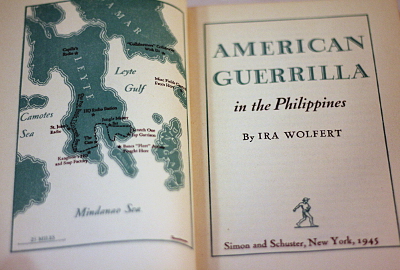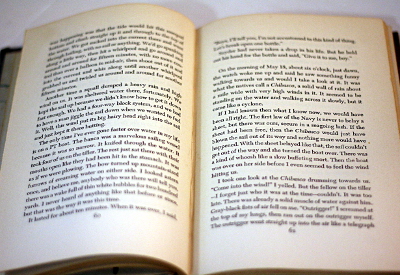A book about guerrilla fighter Iliff David Richardson, written by Pulitzer Prize-winning writer Ira Wolfert.
About Richardson (from Wikipedia):
Oriental. Richardson headed for Malitbog, the next year, hoping to see his girlfriend “Curly”. Col. Morgan was there, working with Col. Wendell Fertig, to unify and organize the guerrillas before General MacArthur would recognize them.
Richardson eventually joined the Philippine guerrilla forces of Ruperto Kangleon, and offered to establish contact with Col. Fertig on Mindanao. Richardson was successful in meeting Col. McLish’s band of guerrillas, including many Americans such as Ed Dyess. McLish led Richardson to Fertig, in Misamis Occidental, where Richardson delivered Kangleon’s letter.While there Richardson met Chick Parsons and agreed to set up radio stations around Leyte and Samar, and provide intelligence on Japanese ship movements. Richardson rejoined Kangleon on 16 Aug., and became his Chief of staff. He also quickly re-established the telegraph system for immediate communication of intelligence. Kangleon then moved his headquarters from Maasin to Don Lorenzo’s Casa in Malitbog.
In Nov. 1943, under orders from Col. Fertig, Kangleon, Richardson, and other guerrilla leaders were in Mindanao to coordinate activities, and meet the submarine USS Narwhal delivering American aid. By Christmas 1943, Richardson had a master radio set operating to communicate with Mindanao. However, by then the Japanese had made the Casa, in Malitbog, their headquarters for southern Leyte.
On 1 Feb. 1944, Kangleon’s forces went on the offensive, which included attacks on Japanese garrisons at Anahawan and Linoan, forcing the Japanese to not venture away from the coastal towns of southern Leyte. Richardson then assisted in the establishment of a weather station, manned by two submarine arrivals, including the son of Walter S. Gamertsfelder. Next, Richardson established a radio station on Samar and plotted the Surigao Strait mine field from Homonhon Island. By 12 Sept., Richardson was operating a radio station near Balangiga, Eastern Samar.
Richardson was picked up by a US destroyer during the Battle of Leyte, and transferred to the USS Nashville, where he met General MacArthur and General Kenney. For his work, Richardson was made a US Army Intelligence major by General Douglas MacArthur, holding commissions in the army and navy simultaneously. He is the only person to receive consecutive medals in both the Army and the Navy.
About Ira Wolfert (from Wikipedia):
Ira Wolfert (November 1, 1908 – November 24, 1997) was an American Pulitzer Prize-winning war correspondent and writer.
He then went to work for the North American Newspaper Alliance from the 1930s through World War II. His series of articles about the November 1942 Naval Battle of Guadalcanal won him the Pulitzer Prize for Telegraphic Reporting (International).
In 1944, Wolfert co-wrote One man Air Force with Captain Don Gentile a leading fighter “ace”. The book is an autobiography of Gentile and details his exploits as a fighter pilot flying P-51 Mustangs with the Eighth Air Force.
His first novel, Tucker’s People about a vicious New York gangster, published in 1943, was well received by both critics and the general public. Wolfert co-wrote the screenplay for the film adaptation, Force of Evil, released in 1948. That same year, he had another success with the novel An Act of Love. He also wrote non-fiction, including the 1943 bestselling eyewitness account Battle for the Solomons and the 1945 American Guerrilla in the Philippines, which recounts the exploits of Navy officer Iliff David Richardson and was made into a 1950 film of the same name, starring Tyrone Power as Richardson. After the war, he continued to write, mainly articles for Readers Digest.




